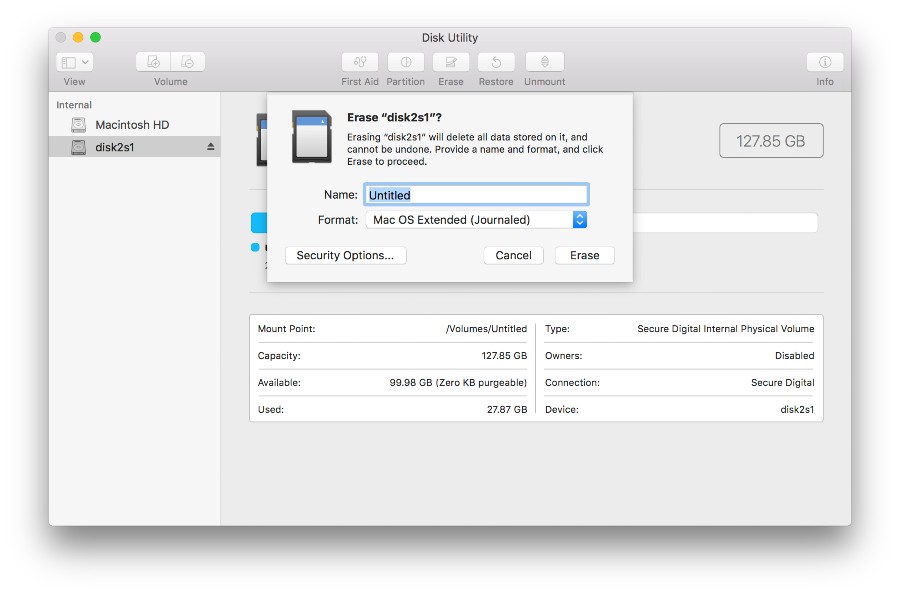
If you don’t want your data recovered, choose the “Most Secure” option. You‘ll be prompted to select an option as to how you would like to delete the data in your drive.Īs you might know, if you erase the data using the fastest way possible, certain disk recovery programs could recover what you erased easily. If you‘ve stored any sensitive data on your USB drive, it is wise to pay attention to the "Security Options" button before you format.
#Mac format flash drive mac os#
Mac OS Extended (Journaled) is the preferred format, but depending on your requirements, select the best option for you from the drop-down menu. You‘ll be prompted to select a name for your drive and the desired format. Select the preferred USB Drive from the menu on the left side of the screen.Ĭlick on “ Erase” on the top toolbar. When you open the “Disk Utility,” the tool will look like below: You can find the “Disk Utility” tool inside the “Utilities” folder. In the “Applications” folder, find the folder named "Utilities," and navigate to it. If you aren’t able to bring up “Spotlight Search” for some reason, navigate to the “Finder” directory and click on “Applications”.


For example, you can only store files that are less than 4GB on the device. This file format is highly compatible but somewhat limiting. This file format is compatible with multiple devices, like PCs and gaming consoles.
#Mac format flash drive windows#
If you plan on using your USB on both Windows and macOS devices, the preferred format is ExFAT. Different File System Formats Available in Disk Utility ExFAT
#Mac format flash drive how to#
Let’s look at how to format your thumb drive for a Mac. Unless it’s specifically designed to work on a macOS, you'll need to reformat the flash drive. It’s because most computers run on Windows and most thumb drives ship with formats that favor a Windows environment. Have you ever tried to use a USB drive on your Mac only to realize you couldn’t write any files to it?


 0 kommentar(er)
0 kommentar(er)
